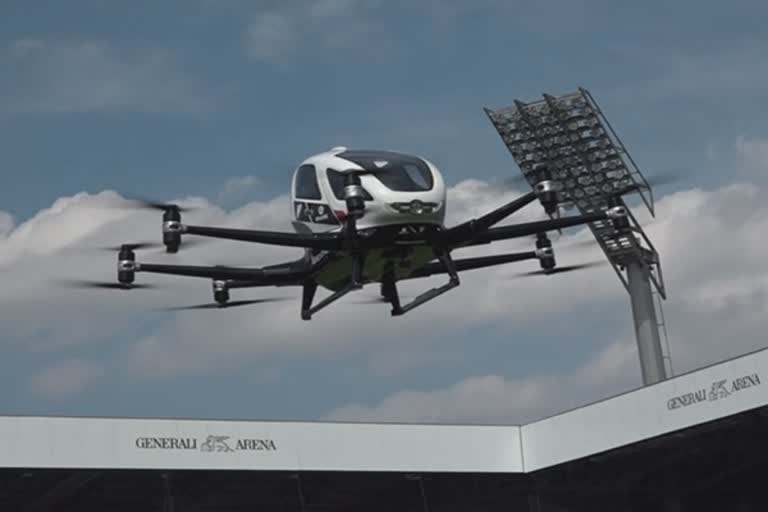Vienna: Austrian airline group FACC and Chinese company Ehang Inc. unveiled the autonomous personal aircraft at a soccer stadium in Vienna.
The Autonomous Aero Vehicle is called EHang 216.
But don't call it a drone, says EHang co-founder and CEO Derrick (Yifang) Xiong.
Also Read: Guaido urges supporters to join 'Mission Freedom'
"This is not a drone, this is what we call AAV, which stands for Autonomous Aero Vehicle," he says.
"Which is a new generation of the aircraft, comes completely autonomously flying, electricity-powered, and green technology and actual redundancy, which means the safety."
The Autonomous Aero Vehicle can carry two passengers and travel at speeds of up to 120-150 kilometres per hour. It has a range of 20 minutes flying time.
Xiong claims it's perfect for city commutes.
"So, the reason we designed this AAV, this Autonomous Aero Vehicle, is to design for ordinary people, who have not been professionally trained or who (don't) have a piloting license to fly," he says.
"Across the urban (city), for short medium distance, which means to fly in the urban (city) aero environment."
Also Read: 1.1 million Venezuelan migrant children need help: UNICEF
Robert Machtlinger, the CEO of FACC AG, says passengers will be able to order the aircraft using a smartphone app.
They will add their destination, then sit back and relax as the aerial vehicle takes them where they'd like to go.
"So, it will be an ecosystem and probably organizations will own a couple of hundred," he says.
"You as an end user, you want to order it, you go into an app, you order it, you want to fly from here to the centre of the city."
"Once the vehicle lands, you only write your name, your destination, you confirm and you shut the door and the vehicle will bring you to your destination, free of stress, you can read, you can... whatever you want to do."
EHang admits it will have to overcome big regulatory and safety hurdles to make this aerial vehicle a commercial success.
Also Read: Trump border visit in California sparks protests
Xiong says they're currently working with governments across the world to gain regulatory approval.
Company officials say the drone's lithium batteries take about two to four hours to charge and provide a flying time of twenty minutes. It can carry up to 250 kilograms.
They say it will be ready for production by FACC in Austria by 2020.



